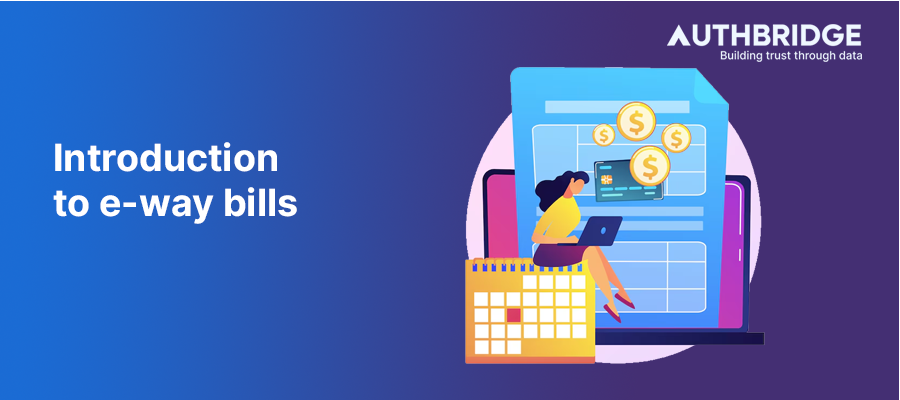Introduction To E-Way Bills: A Comprehensive Guide For Businesses And Compliance

1. Introduction to E-Way Bills
Definition and Purpose
An e-way bill is an electronic document required for the movement of goods in a conveyance whose value exceeds Rs. 50,000. It is generated on the E-Way Bill Portal. The primary purpose of an e-way bill is to ensure that goods being transported comply with the GST Law and to facilitate the tracking of their movement. The e-way bill aims to mitigate tax evasion and ensure seamless inter-state and intra-state transportation of goods across India.
Legal Framework and Applicability
The e-way bill system is governed by the GST Council and is mandated under the Goods and Services Tax (GST) regime. It applies to all goods transported within and across all states of India, with specific exemptions provided for certain types of goods and transactions. The requirement for an e-way bill kicks in when the value of the transported goods exceeds Rs. 50,000, including cases of returns, transfers, and other movements not necessarily tied to a sale.
Table: Applicability of E-Way Bills
Criteria | Applicability |
Value of Goods | Exceeds Rs. 50,000 |
Type of Movement | Sale, Transfer, Export, Import, and Returns |
Exemptions | Specified goods as per GST Council |
2. Generating E-Way Bills
Prerequisites for Generation
Before generating an e-way bill, certain prerequisites must be met:
- Registration on the e-way bill portal by the consignor, consignee, or transporter.
- The invoice/bill/challan related to the consignment of goods.
- Transporter ID, if transportation is carried out by a third party.
- Vehicle number or Transporter Document Number for road transportation.
Table: Prerequisites Checklist
Requirement | Description |
GSTIN | For registered businesses |
Transporter ID | For third-party transporters |
Document Number | Invoice/Bill/Challan number |
Vehicle Number | For road transport |
Step-by-Step Process
- Login to the E-Way Bill Portal: Use your GSTIN and the portal password to log in.
- Choose to Generate New: Select the option to generate a new e-way bill.
- Enter Details: Fill in the details of the consignor, consignee, item, and transporter.
- Submit to Generate: After verification, submit the details to generate the e-way bill.
Table: E-Way Bill Generation Steps
Step | Action |
1 | Login to portal |
2 | Select 'Generate New' |
3 | Enter consignment details |
4 | Submit for generation |
Roles and Responsibilities
- Consignor: Generate the e-way bill when goods are transported from their place.
- Consignee: Ensure the e-way bill is generated when receiving goods.
- Transporter: Generate the e-way bill if the consignor or consignee has not done so.
3. Key Features of E-Way Bills
Validity and Extension
The validity of an e-way bill depends on the distance the goods are transported. It is generally valid for 24 hours for every 100 km or part thereof. Extensions can be applied for under specific circumstances before the expiry.
Table: E-Way Bill Validity
Distance | Validity |
Up to 100 km | 1 Day |
For every additional 100 km | Additional 1 Day |
Documents Required
- GSTIN of the consignor and consignee.
- Transporter ID if applicable.
- Invoice/Bill of Supply/Challan.
- Vehicle number or Transporter Document Number.
Cancellation and Updating
An e-way bill can be canceled within 24 hours of generation if not used. The details of the vehicle can be updated any number of times before the consignment reaches the destination.
4. Technological Integration
Integration with GSTN
The e-way bill system is integrated with the GST Network (GSTN) for seamless data flow and compliance verification, enabling real-time tracking of goods movement.
API-Based Management
For businesses with high volumes of transactions, the e-way bill portal offers API integration, allowing for direct generation, cancellation, and updating of e-way bills from their ERP systems.
5. Compliance and Penalties
Compliance Requirements
Ensuring the generation of an e-way bill when required and carrying the bill during the transportation of goods are the key compliance requirements.
Penalties for Non-Compliance
Failure to comply with e-way bill requirements can lead to penalties, including tax and penalty equal to 100% of the tax amount due, and detention or seizure of goods.
Table: Penalties for Non-Compliance
Violation | Penalty |
Not generating e-way bill | Tax + 100% penalty |
Incorrect information | Fine and potential seizure |
6. Benefits and Challenges
Benefits for Businesses and the Economy
- Transparency and Efficiency: Real-time tracking improves supply chain efficiency.
- Tax Compliance: Facilitates GST compliance and reduces tax evasion.
- Ease of Doing Business: Simplifies the process of goods transportation across states.
Implementation Challenges
- Technological Barriers: Small businesses may struggle with the digital requirements.
- Compliance Awareness: Ensuring all stakeholders are aware of their obligations.
7. Future Prospects
Technological Advancements
Continuous improvements in the e-way bill system, including AI and machine learning for predictive analytics, are expected to enhance the efficiency and security of goods transportation.
Policy Changes and Impact
Ongoing updates to GST and e-way bill regulations aim to simplify compliance further and promote ease of doing business, with a focus on supporting small and medium enterprises.
This comprehensive guide to e-way bills, enriched with data tables and detailed explanations, aims to provide a clear understanding of the system, its requirements, and its impact on businesses and the broader economy.
Category

Abhinandan Banerjee
(Associate Manager - Marketing)
Abhinandan is a dynamic Product and Content Marketer, boasting over seven years of experience in crafting impactful marketing strategies across diverse environments. Known for his strategic insights, he propels digital growth and boosts brand visibility by transforming complex ideas into compelling content that inspires action.



